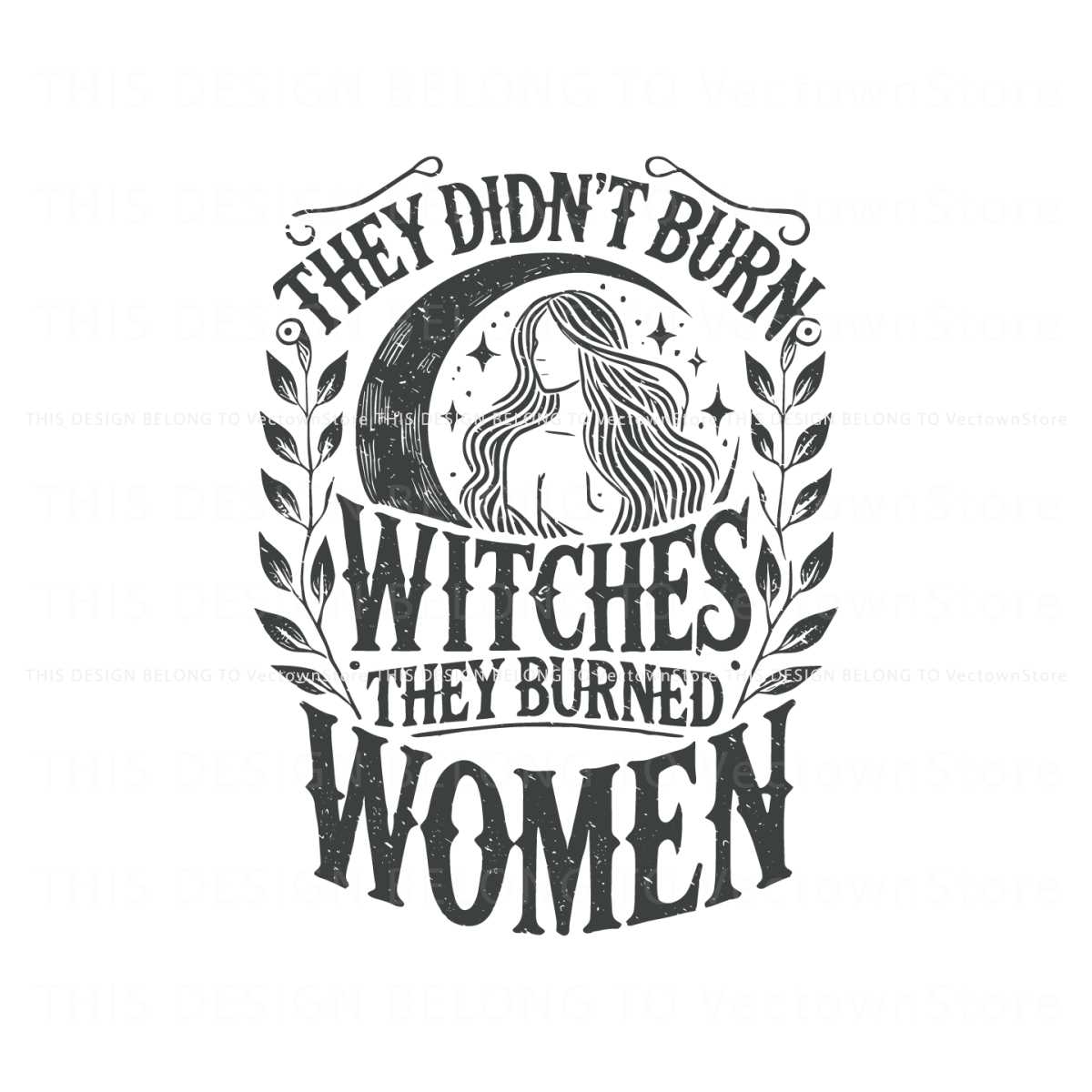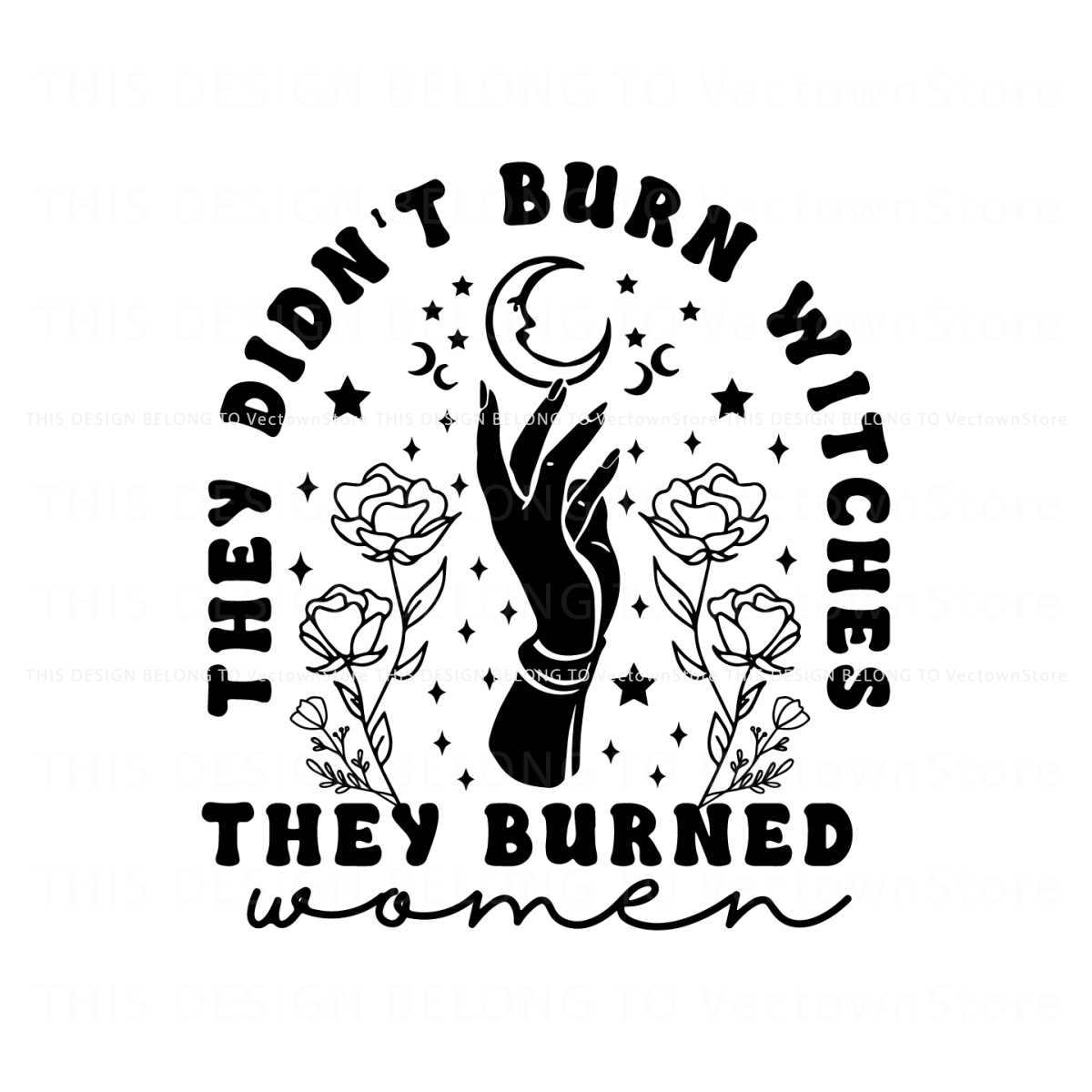History can be messy, brutal, and often misunderstood. The phrase "they didn't burn witches they burned women" is more than just a catchy saying—it’s a stark reminder of a dark chapter in human history that still resonates today. This phrase challenges the narrative we’ve been fed for centuries and sheds light on the real victims of witch hunts. Women, often innocent and powerless, bore the brunt of societal paranoia and misogyny. It’s time to uncover the truth behind this chilling reality.
When we talk about witch hunts, it’s easy to dismiss them as mere folklore or ancient superstition. But the reality is far more sinister. The persecution of women labeled as witches was not just about magic or sorcery—it was about control, fear, and the suppression of female power. Women who didn’t conform to societal norms or posed a threat to the patriarchy were targeted, often with devastating consequences.
So why does this matter now? Because the echoes of this history still affect how we view women in society today. By understanding the past, we can better address the injustices of the present and create a more equitable future. This article dives deep into the truth behind the witch hunts, the women who suffered, and the lessons we must learn to prevent history from repeating itself.
Table of Contents
- The History Behind the Phrase
- What Were Witch Hunts Really About?
- Who Were the Real Victims?
- Misogyny and the Role of Society
- Debunking the Myths of Witch Hunts
- The Numbers Don’t Lie
- The Legacy of Witch Hunts Today
- Feminism and the Fight for Equality
- How to Prevent History From Repeating Itself
- Conclusion: Moving Forward
The History Behind the Phrase
Let’s rewind a bit. The phrase "they didn’t burn witches they burned women" isn’t just a clever turn of words. It’s a powerful statement that challenges the way we’ve traditionally viewed witch hunts. Historically, witch hunts were not about supernatural forces or black magic—they were about controlling women who didn’t fit into the mold of what society deemed acceptable.
In the 15th to 18th centuries, Europe and parts of the Americas were gripped by a wave of hysteria that led to the persecution of thousands of women. These women were accused of witchcraft, often based on flimsy evidence or no evidence at all. The reality? Most of them were simply scapegoats for societal fears and prejudices.
Why Did Witch Hunts Happen?
Witch hunts weren’t random acts of violence. They were systematic campaigns fueled by a mix of religious fervor, political agendas, and deep-seated misogyny. The Catholic Church, for example, played a significant role in promoting the idea that witches were agents of the devil. This narrative was used to justify the persecution of women who were seen as threats to the established order.
But it wasn’t just the Church. Local communities also participated in these hunts, often driven by personal vendettas or economic motives. Women who owned land, practiced herbal medicine, or challenged traditional gender roles were particularly vulnerable.
What Were Witch Hunts Really About?
Witch hunts were more than just trials and executions. They were a reflection of the societal structures of the time. At their core, these hunts were about power—specifically, the power to control women and their place in society.
Think about it. Women who were accused of witchcraft often had one thing in common: they didn’t conform to societal expectations. Whether it was their behavior, their knowledge, or their independence, these women were seen as dangerous and destabilizing. The witch hunts were a way to silence them and reinforce patriarchal norms.
Common Misconceptions About Witch Hunts
There are a lot of myths surrounding witch hunts. Here are a few:
- Only women were accused: While the majority of victims were women, some men were also accused of witchcraft.
- Witches were always burned: In reality, methods of execution varied depending on the region. Hanging was actually more common in some areas.
- Witch hunts were ancient: The peak of witch hunts occurred during the early modern period, not the medieval era.
Who Were the Real Victims?
Let’s talk about the women who were caught in the crosshairs of these hunts. They came from all walks of life, but they shared one common thread—they were women who didn’t fit into the mold of what society expected. Some were healers, others were widows, and still others were simply outspoken.
Take, for example, Bridget Bishop, one of the first women executed during the Salem witch trials. Bridget was a successful businesswoman who owned taverns and had a reputation for being outspoken. Her independence and wealth made her a target in a society that valued conformity and submission.
Why Were Women Targeted?
The reasons for targeting women were complex and varied. Here are a few key factors:
- Misogyny: Women were often seen as inherently sinful or corrupt, making them easy targets for accusations.
- Economic motives: Women who owned property or had financial independence were sometimes accused of witchcraft to seize their assets.
- Superstition: In many cases, natural disasters or illnesses were blamed on witches, leading to mass hysteria.
Misogyny and the Role of Society
Misogyny played a huge role in the witch hunts. Women were seen as weaker, more emotional, and more susceptible to temptation. These stereotypes were used to justify their persecution and reinforce patriarchal control.
But it wasn’t just men who perpetuated these ideas. Women themselves were often complicit in the hunts, either out of fear or a desire to fit in. This highlights the insidious nature of misogyny—it affects everyone, not just the direct victims.
How Misogyny Fueled the Hunts
Misogyny wasn’t just a side effect of the witch hunts—it was the driving force behind them. Here’s how:
- Gender roles: Women who deviated from traditional roles were seen as dangerous and unnatural.
- Religious doctrines: The Church’s teachings about Eve and the fall of man reinforced the idea that women were inherently sinful.
- Social pressures: Communities often turned on women who didn’t conform, using witchcraft accusations as a way to ostracize them.
Debunking the Myths of Witch Hunts
There are a lot of myths surrounding witch hunts, and it’s important to separate fact from fiction. For example, many people believe that witch hunts were ancient practices, but the truth is that they peaked during the early modern period. Similarly, the idea that all witches were burned is a misconception—methods of execution varied depending on the region.
Another common myth is that witch hunts were purely religious in nature. While religion certainly played a role, economic and political factors were equally important. Understanding these nuances helps us better grasp the complexity of the witch hunts.
Key Facts About Witch Hunts
- Duration: Witch hunts spanned several centuries, with the peak occurring between the 15th and 18th centuries.
- Regions: Witch hunts were most prevalent in Europe, but they also occurred in parts of the Americas.
- Victims: While the majority of victims were women, some men were also accused of witchcraft.
The Numbers Don’t Lie
When it comes to witch hunts, the numbers tell a sobering story. Estimates suggest that between 40,000 and 60,000 people were executed for witchcraft during the early modern period. Of these, the vast majority were women. In some regions, the percentage of female victims was as high as 90%.
But it’s not just the numbers that matter—it’s the stories behind them. Each victim had a name, a life, and a family. They were real people whose lives were cut short by fear and prejudice.
Regional Differences in Witch Hunts
Witch hunts varied significantly depending on the region. Here are a few examples:
- Germany: One of the most active regions for witch hunts, with thousands of executions.
- Scotland: Known for its particularly brutal witch hunts, with many victims being burned at the stake.
- Salem, Massachusetts: Perhaps the most famous witch hunt in American history, resulting in the execution of 20 people.
The Legacy of Witch Hunts Today
The legacy of witch hunts is still felt today. While we no longer burn women at the stake, the underlying issues of misogyny and societal control persist. Women continue to face discrimination and oppression in various forms, from workplace inequality to domestic violence.
But there’s hope. By acknowledging the past, we can work to create a more just and equitable society. The phrase "they didn’t burn witches they burned women" serves as a powerful reminder of the importance of this work.
Modern-Day Implications
Here are a few ways the legacy of witch hunts affects us today:
- Feminism: The fight for gender equality is directly tied to the history of witch hunts.
- Legal systems: Modern legal systems must be vigilant in protecting the rights of all individuals, regardless of gender.
- Social justice: Addressing the root causes of misogyny and discrimination is crucial for creating a more just society.
Feminism and the Fight for Equality
Feminism is more than just a movement—it’s a continuation of the fight for equality that began centuries ago. The women who were persecuted during the witch hunts were pioneers in their own right, challenging the status quo and paving the way for future generations.
Today, feminism is about more than just gender equality—it’s about creating a world where everyone, regardless of gender, race, or socioeconomic status, can live free from fear and oppression.
How to Prevent History From Repeating Itself
History has a way of repeating itself if we don’t learn from it. To prevent the atrocities of the past from happening again, we must remain vigilant and proactive. Here are a few ways to do that:
- Educate: Teach people about the history of witch hunts and their relevance today.
- Advocate: Support policies and initiatives that promote gender equality and social justice.
- Empower: Encourage women and marginalized groups to speak out and demand change.
Conclusion: Moving Forward
The phrase "they didn’t burn witches they burned women" is a powerful reminder of a dark chapter in human history. It challenges us to confront the past and work toward a better future. By understanding the root causes of witch hunts and their lasting impact, we can create a world where women are valued and respected.
So what can you do? Start by educating yourself and others about the history of witch hunts. Support organizations that promote gender equality and social justice. And most importantly, use your voice to advocate for change. Together, we can ensure that history doesn’t repeat itself.
Let’s keep the conversation going. Share this article, leave a comment, or explore other topics on our site. The fight for equality starts with each of us.



Detail Author:
- Name : Leta Trantow
- Username : fcrona
- Email : hansen.jackson@terry.com
- Birthdate : 1994-12-11
- Address : 70381 Ezra Place Albinaland, RI 32160-9185
- Phone : 520.418.2062
- Company : Leuschke-Hickle
- Job : Pipefitter
- Bio : Hic error vero occaecati rerum. Natus quis quasi deleniti facilis culpa. Quo porro perspiciatis incidunt ut assumenda dolorum voluptatem.
Socials
linkedin:
- url : https://linkedin.com/in/grayson_leffler
- username : grayson_leffler
- bio : Vero perspiciatis ipsam dignissimos cum.
- followers : 2133
- following : 2490
instagram:
- url : https://instagram.com/grayson_official
- username : grayson_official
- bio : Qui maxime laboriosam unde quam. Perferendis fuga est ipsam. Aut quam ea eos laborum nemo.
- followers : 4533
- following : 1481